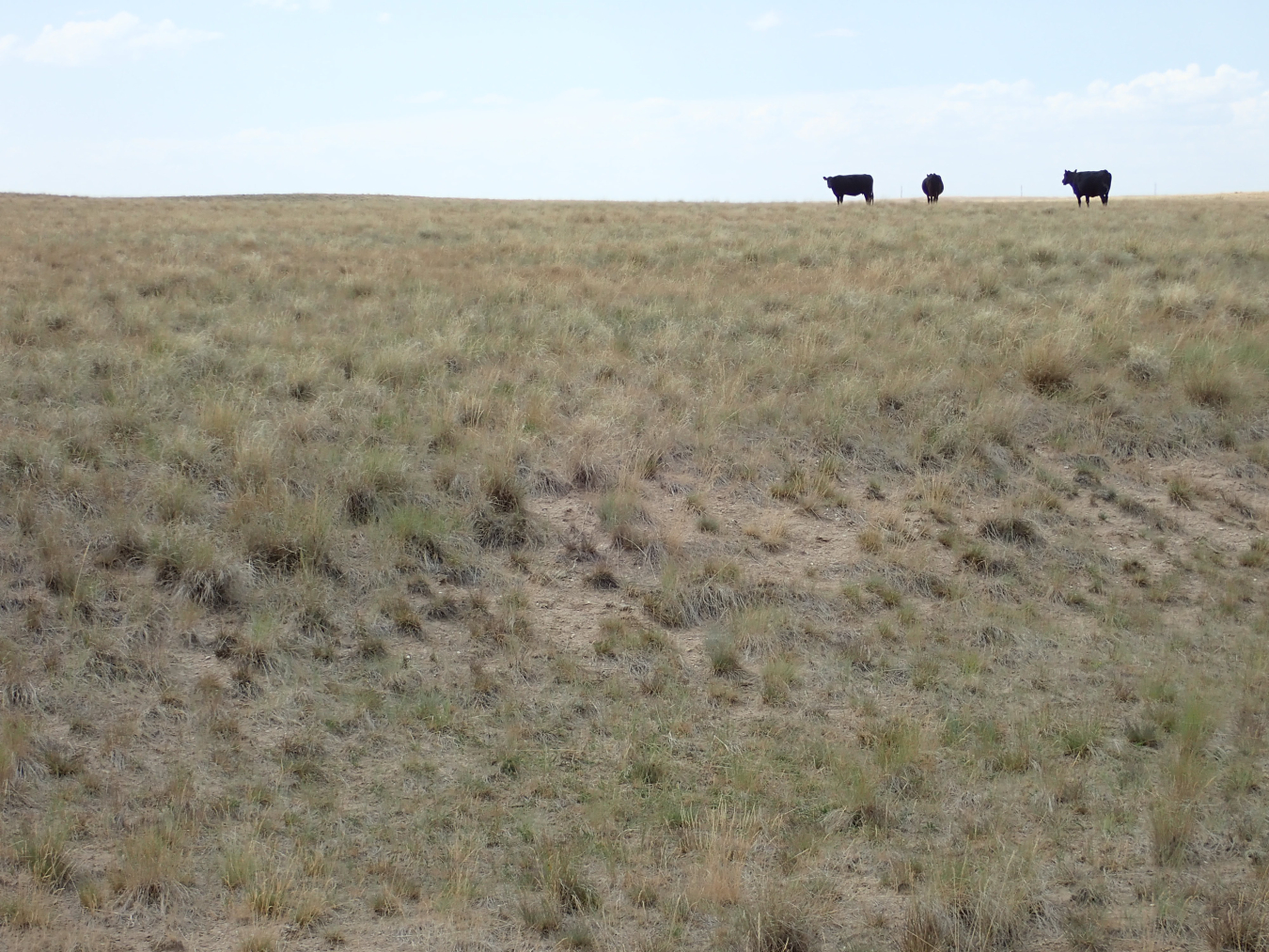The Shirley Basin South site is hosting a study designed to explore regenerative grazing.
February 16, 2021
David Holbrook, lead ecologist for the LM Strategic Partner (LMSP), standing next to basin wildrye in one of the regenerative grazing study plots.
The sprawling, 1,527-acre Shirley Basin South, Wyoming, Disposal Site sits within rolling grassland and sagebrush steppe about 60 miles south of Casper. A uranium mill at the Shirley Basin site processed uranium ore from the 1960s to the 1980s, and a disposal cell on the site now safely encapsulates the radioactive tailings produced in the milling process, as well as contaminated soils and building materials from the old mill.
The site, which is owned and managed by the U.S. Department of Energy Office of Legacy Management (LM), has supported a grazing licensee as part of the LM Beneficial Reuse Program, which aims to “sustainably manage and optimize the use of land and assets.”
The Shirley Basin South site is now taking that commitment to sustainable management a step further by hosting a study designed to explore a holistic livestock grazing approach called “regenerative grazing.”
Site and program managers say the land use history of the site makes it the ideal location for study of sustainable rangeland practices.
“The Shirley Basin area is very unique — there are a lot of things going on with land use, historically and current,” said David Holbrook, the lead ecologist for the LM Strategic Partner (LMSP). “It’s sort of like a checkerboard. Part of it has been mined before, and it’s been revegetated under a legacy management cleanup. Some of it is native rangeland, and all these areas have different levels of plant diversity. Some areas have been grazed for over 100 years, some for the past 10-20 years, and some that have never been grazed.”
Holbrook said the unique characteristics of the site will allow a comparison of historic and current land use and livestock practices on plant diversity, soil carbon, and overall rangeland conditions. According to Holbrook, practicing sustainable grazing practices — “the right amount of cows in the right area for the right amount of time” — can promote plant growth and increase the soil’s ability to pull carbon from the atmosphere and store it in the soil, a process called carbon sequestration.
Carbon sequestration is often promoted as a method of reducing the amount of carbon dioxide in the atmosphere with the goal of reducing global climate change.
LM already conducts rangeland health monitoring at the site, so it wasn’t difficult to take monitoring one step further into the research realm.

Cattle from the Heward 7E Ranch grazing at the Shirley Basin South site.
At Shirley Basin South, the LM team found a willing partner in the project in the current grazing licensee Todd Heward, who has long been interested in sustainable grazing systems and has partnered with the local conservation district and the University of Wyoming to conduct grazing-related studies. The nearby Heward family 7E Ranch won the 2010 Leopold Conservation Award from the Sand County Foundation, a prestigious nationwide award honoring community leaders and land stewards.
“Heward is all about improving the condition of the land from a sustainability and conservation standpoint,” Holbrook said. “He’s implemented rotational grazing using electrical fences, which allows him to move cattle frequently from pasture to pasture. He makes sure that the landscape remains in good rangeland health and condition.”
Heward put the LM and LMSP Ecology Team in contact with Dr. Anowar Islam, a forage agroecologist in the Plant Sciences Department at the University of Wyoming and a leading researcher of the benefits of regenerative grazing. Islam proposed turning the Shirley Basin South regenerative grazing study into a master’s thesis project. Under LM direction and help, a University of Wyoming graduate student will conduct the study as the main component of his thesis.

Holbrook collecting data for a rangeland health assessment.
The team is preparing to begin data collection on the 3-year project in spring 2021.
Joyce Chavez, the LM Reuse Asset manager and one of the leading proponents of the project, said the regenerative grazing study is a natural fit with LM’s land management and beneficial reuse goals.
“By optimizing grazing practices, LM supports long-term stewardship of land by improving habitats for the local species and promotes resiliency of the site,” said Chavez.
Bernadette Tsosie, the LM site manager for the Shirley Basin South site, said she is excited about the collaboration with the University of Wyoming and opportunities on the project for graduate student research.
“My career has come full circle since I received funding from DOE to do my graduate work at the Shiprock site in New Mexico,” said Tsosie. “Now that I’m a site manager for LM, I’m always looking for opportunities to support students who are just starting their careers.”
Holbrook echoed Chavez’s and Tsosie’s enthusiasm for the benefits of the project, not just for the Shirley Basin South site but for all LM sites where grazing is a part of the land management approach.
“We take pride in supporting our number one mission, which is supporting the LM mission of protecting human health and environment, but also re-using the site and working with local ranchers, trying to stay on the cutting edge of sustainable rangeland management practices,” Holbrook said.

